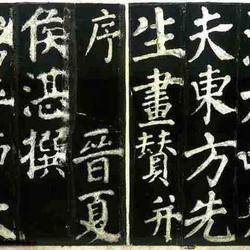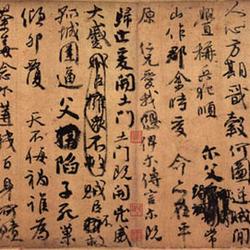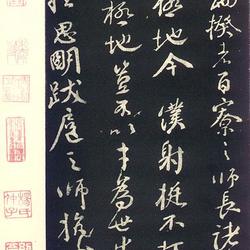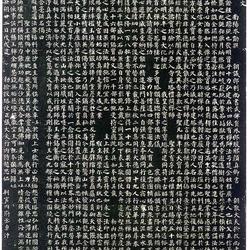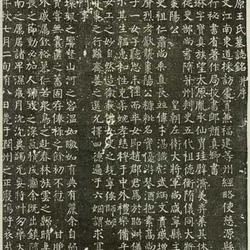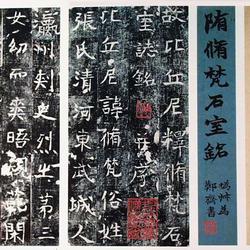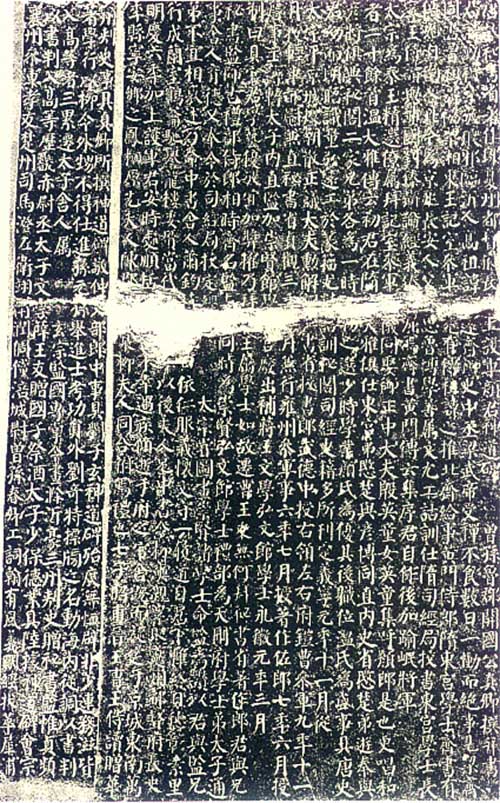
The sun and sides of the stele
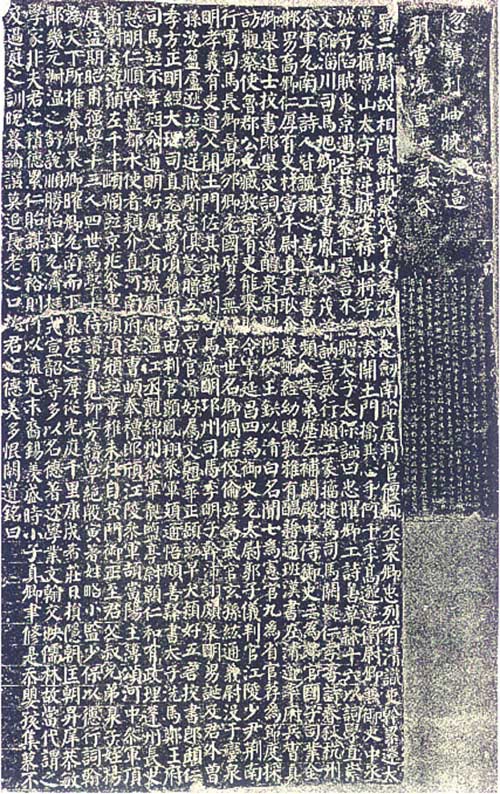
The shade and sides of the monument
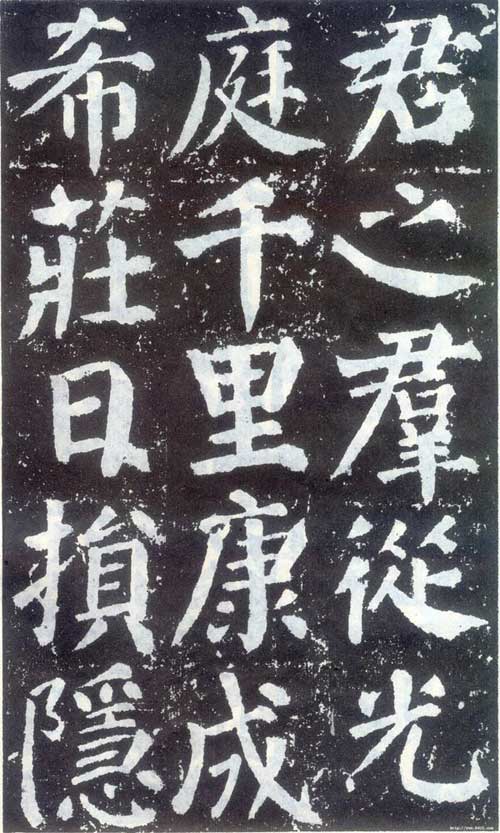
It was established in the 14th year of the Dali calendar (779). Regular script and inscriptions. 175×90×22 cm. The stele is surrounded by engravings on all sides, and books are stored on three sides. There are 19 lines on the yang side of the stele, 20 lines on the yin side of the stele, and 38 characters on each line. There are 5 lines on the left, 37 words in each line. The upper half of the right side is engraved with the fourteen characters of the Song Dynasty, "Suddenly the line of Xiuxiao is approaching, and the snow has washed away the mist." The lower part is engraved with the inscription and postscript of Bolu of the Song Dynasty of the Republic of China. It is now in the Forest of Steles in Xi'an, and the original rubbing is in the collection of the Palace Museum in Beijing.
The full name of this monument is "The Shinto Monument of Protector Yan Gong in the History of the Governor of Langkui Prefecture, written by the Secretary of the Ministry of Public Affairs". Yan Qinli was Yan Zhenqing's great-grandfather. Yan Zhenqing was 71 years old when he wrote and published this monument.
This stele was recorded in Ouyang Xiu's "Collection of Ancient Records", but not in Qing Dynasty's "Jin Shi Cui Bian" and other books. This shows that this stele was well-known in the Northern Song Dynasty. It was buried in the earth during the Yuan and Ming Dynasties, and was only rediscovered during the Republic of China. According to Song Bolu's 1923 inscription and postscript: This stele was obtained by He Menggeng in the soil behind the old Fan Liku Hall in Xi'an in October 1922. Although the stele had been interrupted at that time, the top and bottom were intact. However, the inscription was accompanied by the date of the stone. As a base and obliterated. First unearthed extension
Originally, the word "Gu" in "The Elder's Mouth Gu" should have broken lines at the break, but the strokes will not be damaged. Afterwards, the word "gu" was replaced by "搐". The right vertical stroke of the word "stele" in the first line is intact.

